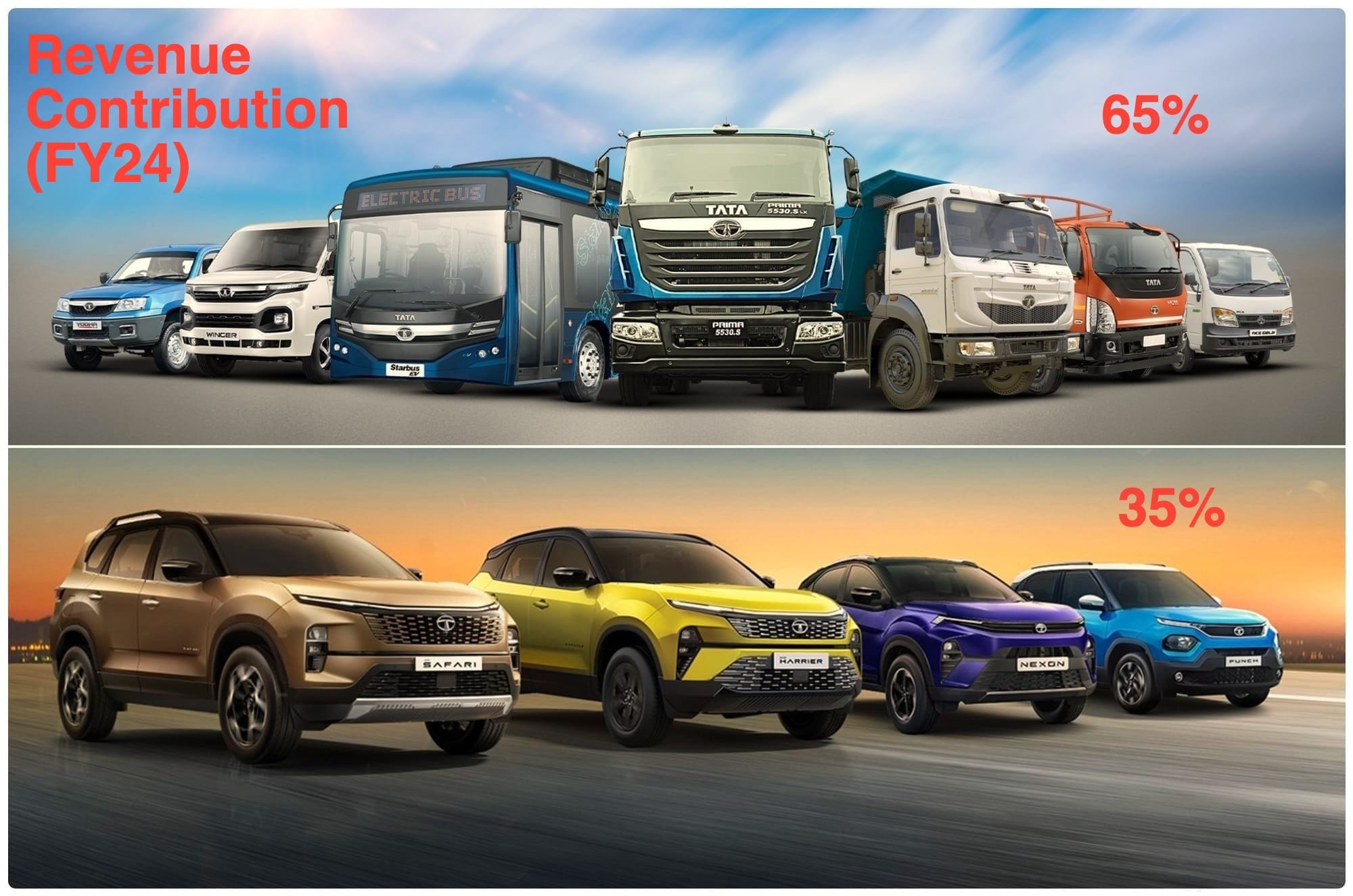Tata Motors Commercial vs Tata Motors Passenger Vehicles — Two Worlds, One Legacy
Tata Motors drives both India’s economy and dreams — through its powerful commercial vehicles and safe, stylish passenger cars. Here’s how both divisions differ yet define modern mobility. #TataMotors #Automobile #EVIndia #CommercialVehicles #PassengerCars #BusinessInsights

When you hear “Tata Motors,” what comes to mind? For some, it’s the Tata Tiago EV — clean, stylish, and future-ready. For others, it’s the Tata 407, India’s workhorse that’s been running businesses for decades.
The truth is, Tata Motors has mastered both sides of India’s road — from heavy trucks to electric hatchbacks. But how different are their commercial and passenger vehicle divisions really? Let’s break it down.
🏢 The Two Faces of Tata Motors
Tata Motors operates under two distinct divisions:
🚛 Tata Motors Commercial Vehicles (CV)
🚗Tata Motors Passenger Vehicles (PV)
Each has a separate identity, business goal, and customer base — yet both share the same Tata DNA of trust and innovation.
🚛 Tata Motors Commercial Vehicles (CV): The Backbone of India’s Economy
🌐 Overview
Tata Motors CV division serves industries, logistics, and public transport. It has a wide range — from mini trucks and buses to heavy-duty vehicles.
🚚 Key Segments
| Category | Examples / Models | Usage |
|---|---|---|
| Small Commercial Vehicles (SCVs) | Tata Ace, Tata Intra | Local goods transport, small business |
| Intermediate & Light CVs (ILCVs) | Tata 407, Tata Ultra | Medium logistics, regional transport |
| Medium & Heavy CVs (M&HCVs) | Tata LPT 1613, Signa | High-load logistics, industrial transport |
| Passenger Carriers | Tata Starbus, Tata Winger | Public transport, schools, tourism |
⚙️ Key Highlights
- Over 45% market share in the Indian CV space.
- Strong export presence in Africa, ASEAN, and Middle East.
- CNG and EV versions like the Tata Ace EV are redefining commercial transport.
💡 Focus
- Durability and uptime
- Low running cost
- Fleet management and after-sales support
🚗 Tata Motors Passenger Vehicles (PV): The New-Age Revolution
🌟 Overview
Once seen as conservative, Tata’s passenger division has undergone a massive transformation — design, safety, and tech now lead the charge.
🚘 Popular Models
| Segment | Model | Highlights |
|---|---|---|
| Hatchback | Tata Tiago / Tiago EV | Safe, affordable, practical |
| Sedan | Tata Tigor / Tigor EV | Compact and efficient |
| SUV | Tata Nexon / Harrier / Safari | Stylish, powerful, India’s top-selling EV (Nexon EV) |
⚙️ Key Highlights
- Known for 5-star GNCAP safety ratings (Tiago, Nexon, Altroz).
- Fastest-growing EV lineup in India (Tata EVs command over 70% market share).
- Modern design philosophy powered by Impact Design 2.0.
💡 Focus
- Safety, comfort, technology, and sustainability.
- Targeted at families, urban youth, and EV-first buyers.
⚖️ Tata Motors CV vs PV — At a Glance
| Aspect | Commercial Vehicles | Passenger Vehicles |
|---|---|---|
| Purpose | Transport goods & services | Transport people |
| Customer Base | Businesses, fleet owners | Individuals, families |
| Key Strength | Durability & load capacity | Safety & design innovation |
| Fuel Focus | Diesel, CNG, EV | Petrol, Diesel, EV |
| Revenue Contribution (FY24) | ~65% | ~35% |
| Growth Driver | Infrastructure demand | EV and SUV boom |
⚙️ Shared Vision — Different Roads
Despite being separate divisions, both share a common purpose — to make India move forward responsibly.
While CVs power the country’s economy, PVs reflect the aspiration of its people.
In 2022, Tata Motors even demerged its CV and PV businesses into independent subsidiaries — giving each more freedom to innovate and grow faster.
🌍 The Road Ahead
- Commercial Division: Focus on electric mobility for fleets, last-mile delivery, and clean fuel tech.
- Passenger Division: Expanding EV infrastructure and premium SUV segment (Curvv, Sierra EV).
Together, they form a complete mobility ecosystem — from highways to homes.
⚠️ Disclaimer:
This blog is based on publicly available reports and industry data. Figures are approximate and may vary by model and fiscal year.
